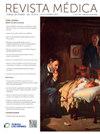Osteoporosis secundaria
IF 0.4
Q4 MEDICINE, GENERAL & INTERNAL
引用次数: 0
Abstract
Secondary osteoporosis is a condition that arises as a consequence of underlying diseases or medical treatments that affect bone metabolism, in contrast to primary osteoporosis, which is associated with age-related bone loss and the hormonal changes of menopause. Its clinical presentation differs, as it can occur in younger patients and, in some cases, be associated with more severe bone loss, increasing the prevalence of fragility fractures.
Identifying secondary causes is crucial, as it directly impacts treatment strategies and fracture risk assessment. Early recognition is essential to ensure an adequate evaluation, individualize treatment based on the underlying etiology and patient needs, and ultimately prevent fragility fractures.
This review aims to highlight when to suspect secondary osteoporosis, how to properly assess it, as well as provide tools for its clinical management.
继发性骨质疏松症是一种由于潜在疾病或影响骨代谢的药物治疗而引起的疾病,与原发性骨质疏松症相反,原发性骨质疏松症与年龄相关的骨质流失和更年期的激素变化有关。它的临床表现不同,因为它可以发生在年轻患者身上,在某些情况下,与更严重的骨质流失有关,增加了脆性骨折的患病率。确定继发性原因至关重要,因为它直接影响治疗策略和骨折风险评估。早期识别对于确保充分的评估、基于潜在病因和患者需求的个体化治疗以及最终预防脆性骨折至关重要。本文旨在强调继发性骨质疏松症的诊断时机,如何正确评估,并为临床治疗提供工具。
本文章由计算机程序翻译,如有差异,请以英文原文为准。
求助全文
约1分钟内获得全文
求助全文
来源期刊

Revista Medica Clinica Las Condes
MEDICINE, GENERAL & INTERNAL-
CiteScore
0.80
自引率
0.00%
发文量
65
审稿时长
81 days
 求助内容:
求助内容: 应助结果提醒方式:
应助结果提醒方式:


